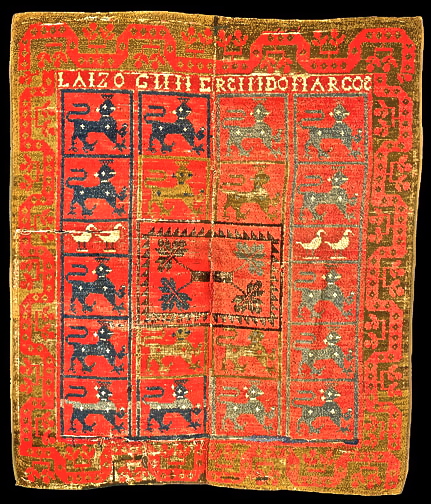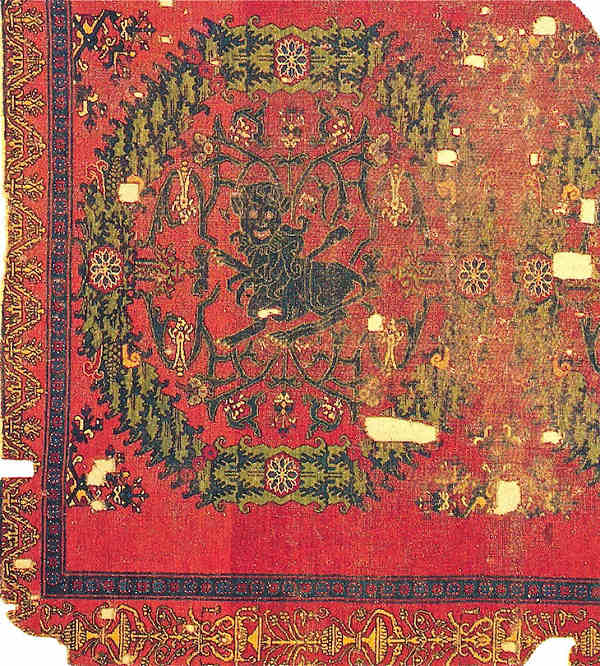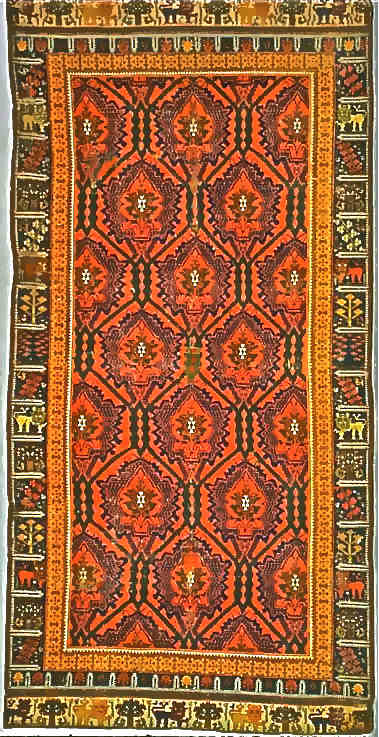Spanish animal rugs
Hi Rich,
Your question about birds in Spanish Renaissance rugs hits an interesting point.
As mentioned by Yohann in an earlier post, Al Andalus might indeed have been the source of some of the (geometric- or animal-) rugs featured in 15-16th century paintings.
Curatola (1) thinks that some of the smaller rugs appearing in V. Carpaccio’s cycle of Saint Ursula (FIG 1, detail; Accademia, Venice) have a spanish origin. The "Parrot & Pope" rug in our essay might have been woven there too.

Al Andalus was indicated by the arab traveler el-Idrisi and the historian al-Saqundi (12th century) as being a very active weaving center, exporting its rugs to other Moslem states and "to the whole world". (2)(4). Rug fragments with typical Spanish knot, found at Fostat (Cairo) seem to confirm their information.
Eleanor of Castille, after her marriage to Edward I in 1254, was reputed to have brought a large quantity of Spanish rugs for use in her apartments at Westminster. (3)(4)
As illustrated by the extant rugs below, Al Andalus weavers were quite fond of animals, especially lions, griffons, bulls, chihuahuas (see border in FIG 2) ...err and yes Rich, chicken too

.

Alcaraz? 15th century. In "Oriental Rugs from Atlantic Collections", D. Dodds & M.L. Eiland.

Alpujarra 16th century.

Alcaraz? 16th century. In "Orienteppiche im MIK Berlin", F. Spüler

Undefined Spanish origin. 16th century.
Sources:
(1) Venise et l’Orient. Tissus et tapis Ã* Venise. G. Curatola, pag. 210.
(2) Alfombras Españolas de Alcaraz y Cuenca, siglos XV -XVI. Museo Nacional de Artes Decorativas, pag. 21
(3) Historic Floors. Jane Fawcett.
(4) Carpet art in Islamic Civilization. Ragheb Elsergany.